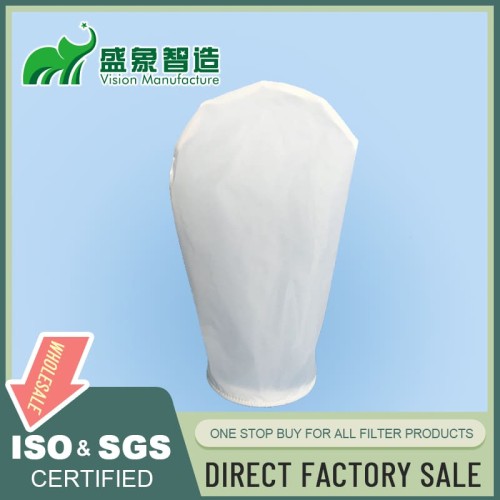
25 Micron Filter Bags: Precision Filtration for Enhanced Industrial Processes
I. Introduction
In the realm of industrial filtration, the precision of micron ratings critically determines the effectiveness of the process. This introduction delves into the significance of 25 micron filter bags, highlighting their pivotal role in refining filtration practices across various industries and their impact on enhancing operational efficiencies.
II. Understanding 25 Micron Filtration
A 25 micron filter bag is designed to capture particles that are 25 micrometers in diameter, striking a balance between fine and coarse filtration. This section will explore:
- What 25 Micron Means: Clarifying the dimensions and implications of filtering at this micron level.
- Particle Size Perspective: Discussing the types of particles typically targeted by this filtration grade.
- Filtration Efficiency at 25 Micron Level: Evaluating how effectively these bags can purify liquids and gases.
III. Types of 25 Micron Filter Bags
The versatility of 25 micron filter bags is reflected in their various constructions:
- Material Options: Including polypropylene, polyester, and nylon, each suited to different environments.
- Construction Methods: Ranging from sewn to welded, affecting durability and performance.
- Size and Shape Variations: Customizable to fit specific machinery and applications.
- Vision Filter's Range: Showcasing a diverse selection tailored to meet broad industrial needs.
IV. Applications in Industrial Filtration
These filter bags are integral to numerous sectors:
- Water and Wastewater Treatment: Essential for removing contaminants and safeguarding water quality.
- Chemical Processing: Used in the filtration of chemical agents to prevent product contamination.
- Food and Beverage Industry: Ensures the clarity and purity of consumables during manufacturing.
- Pharmaceutical Manufacturing: Critical in maintaining contaminant-free conditions in drug production.
- Oil and Gas Industry: Filters out impurities that can damage equipment and reduce efficiency.
- Paint and Coatings: Ensures smooth finishes by filtering out impurities.
- Electronics Manufacturing: Prevents contamination during the production of electronic components.
V. Advantages of 25 Micron Filter Bags
The benefits of using 25 micron filter bags include:
- Improved Filtration Efficiency: Effectively removes fine particulates, enhancing product quality.
- Balance Between Flow Rate and Particle Capture: Optimizes both the purity and volume of throughput.
- Versatility Across Industries: Adaptable to a wide range of applications due to their robust design.
- Cost-effectiveness: Offers a financially viable solution for many industrial processes.
- Protection of Downstream Equipment: Reduces wear and tear on machinery by preventing the ingress of harmful particles.
VI. Choosing the Right 25 Micron Filter Bag
Selecting the appropriate filter bag involves:
- Factors to Consider: Such as material compatibility with the processed media, flow rate, and type of contaminants.
- Sizing Considerations: Ensuring the bag fits perfectly within existing systems.
- Retention Ratings: Choosing between nominal and absolute ratings based on the required level of purity.
- Customized Solutions from Vision Filter: Tailored recommendations based on specific industrial requirements.
VII. Installation and Maintenance
Ensuring optimal performance of 25 micron filter bags requires:
- Proper Installation Techniques: Guidelines to secure the bags effectively within filtration systems.
- Monitoring and Replacement Guidelines: Regular assessments to determine the need for replacements.
- Cleaning and Reuse Considerations: Protocols for maintaining bag condition and extending service life.
- Troubleshooting Common Issues: Strategies to address typical operational challenges.
VIII. Comparing 25 Micron to Other Micron Ratings
Understanding when to use 25 micron filtration versus other ratings involves:
- Comparison with Finer Filtration: Such as 1, 5, or 10 microns, which may be necessary for more critical applications.
- Comparison with Coarser Filtration: Such as 50 or 100 microns, suitable for less stringent conditions.
- Cost and Performance Comparisons: Evaluating the trade-offs involved in selecting different micron ratings.
IX. Environmental and Sustainability Aspects
The sustainability of using 25 micron filter bags is underscored by:
- Recyclability: Promoting the use of materials that can be recycled to minimize environmental impact.
- Energy Efficiency: Enhancing the energy efficiency of filtration processes.
- Waste Reduction Strategies: Implementing measures to reduce waste in filtration operations.
- Sustainable Practices at Vision Filter: Commitment to environmentally responsible manufacturing and operational practices.
X. Innovations in 25 Micron Filter Bag Technology
Innovations in 25 micron filter bag technology include:
- Advanced Fiber Blends: Enhancing performance through innovative material combinations.
- Multi-layer Designs: Improving filtration efficiency without compromising flow rate.
- Integration with IoT for Smart Filtration: Enhancing monitoring and control capabilities.
- Innovative Contributions by Vision Filter: Leading the development of cutting-edge solutions in 25 micron filtration.
XI. Case Studies: 25 Micron Filter Bags in Action
Real-world applications demonstrate the effectiveness of 25 micron filter bags in various industries, showcasing their ability to solve complex filtration challenges and deliver significant improvements in performance and operational efficiency.
XII. Future Trends in Precision Filtration
The future of precision filtration with 25 micron bags looks promising, with potential advancements in material technology and integration with smart systems enhancing their applicability and efficiency.
XIII. Conclusion
25 micron filter bags are essential for maintaining high standards in industrial filtration, offering a balance of efficiency and cost-effectiveness. As industries continue to demand higher precision in filtration, Vision Filter is ready to meet these challenges with advanced solutions and expert guidance.
Leave a comment

